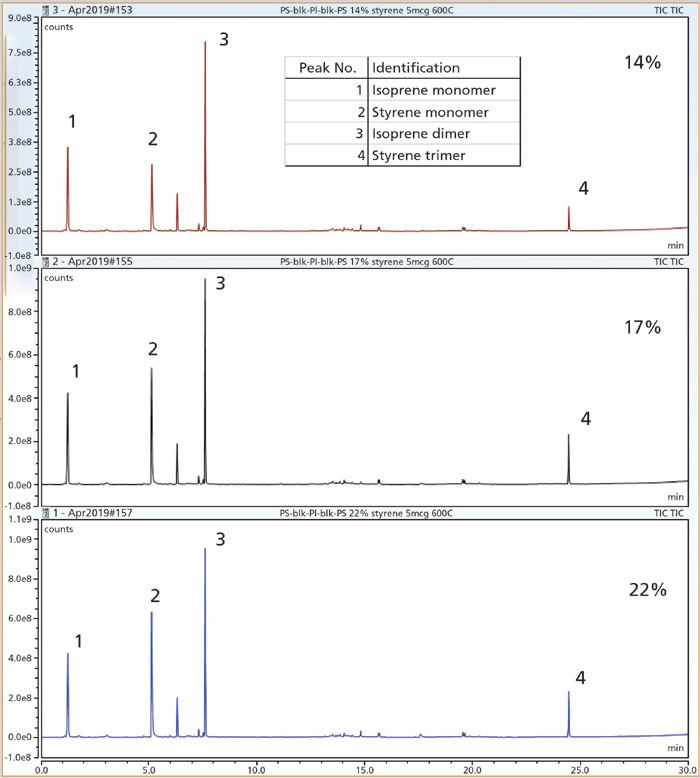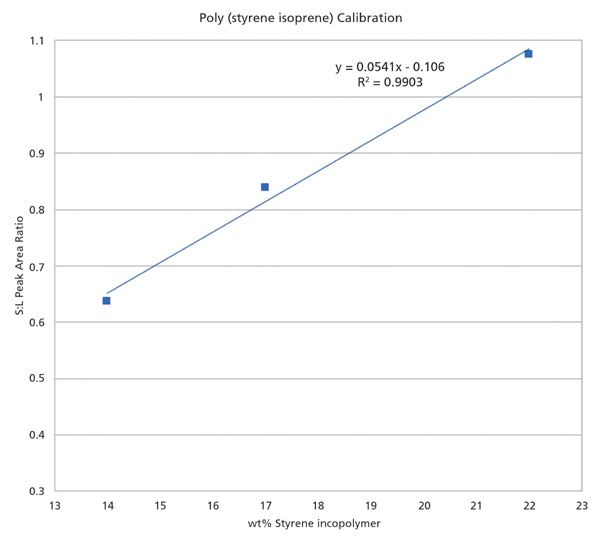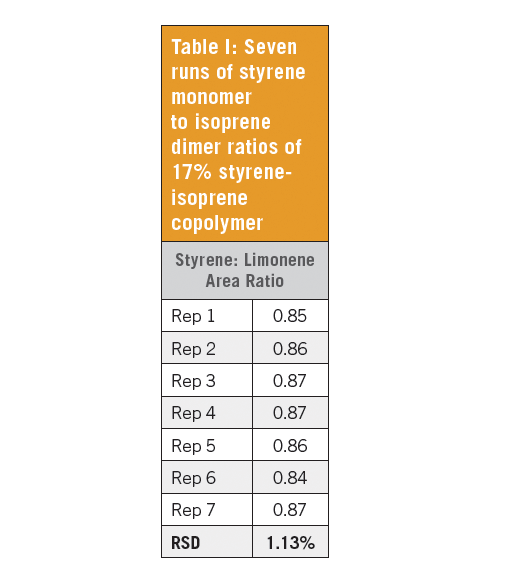CDS Analytical - Quantitative Analysis of Copolymers Using a Pyroprobe
This application note demonstrates quantitative analysis of poly(styrene-isoprene) copolymers, including relative standard deviations (RSDs), and a calibration curve using a CDS Model 6150 Pyroprobe.
Analytical pyrolysis is a powerful tool for the qualitative analysis of polymers. The analysis usually starts from a simple pyrogram match to an existing pyrolysis database to identify the polymer chemical structure. If multiple polymers are identified, a quantitative method is often adopted by comparing peak areas of the pyrolysis products to determine each polymer ratio. In this application, styrene-isoprene block copolymers, which are large-volume, low-priced commercial thermoplastic elastomers, are analyzed by following this approach.
Experimental Conditions
Block copolymer standards styrene-isoprene at 14%, 17%, and 22% (styrene to copolymer weight ratio) were obtained from Sigma Aldrich. Solutions of each copolymer standard were prepared in tetrahydrofuran to 1 mg/mL. A 5µL aliquot of each weight % copolymer solution was added to a Drop-In-Sample Chamber (DISC) tube, then pyrolyzed to a setpoint of 600 °C using a CDS 6150 Pyroprobe.
Pyroprobe
Setpoint: 600 °C 30 s
DISC Interface: 300 °C
Transfer Line: 300 °C
Valve Oven: 300 °C
GC–MS
Column: 5% phenyl (30 m × 0.25 mm)
Carrier: Helium 1.25 mL/min, 75:1 split
Oven: 40 °C for 2 min, 10 °C/min to 300 °C
Ion Source: 230 °C
Mass Range: 35–600 amu

Figure 1: Poly(styrene-isoprene) copolymer pyrogram with 14% (top), 17% (middle), and 22%(bottom) styrene. Peak 1: Isoprene monomer, Peak 2: Styrene monomer, Peak 3: Isoprene dimer, Peak 4: Styrene trimer
Results
Figure 1 shows pyrograms of poly(styrene-isoprene) copolymers containing 14, 17, and 22 weight % styrene. When pyrolyzed, polystyrene is principally broken down to monomer (Peak 2 in Figure 1) and trimer (Peak 4 in Figure 1). As the styrene weight increases in the copolymer, so does the area of the peaks from polystyrene (Peaks 2 and 4) in relation to the peaks from polyisoprene (Peaks 1 and 3).

Figure 2: Styrene monomer to isoprene dimer ratio vs. styrene weight % in copolymer
Considering the signal-to-noise ratio and the simplicity of algorithm, the highest peaks from styrene monomer (Peak 2) and isoprene dimer (Peak 3) were chosen for quantitative analysis. Area ratios of these two peaks were plotted against the weight percent of styrene in each of the standards in Figure 2, which shows a linear calibration with a R2>0.99. The reproducibility study was also carried out from seven sample runs on the 17% styrene standard. An RSD of 1.13% is obtained in Table I.

Conclusions
The linearity and RSDs demonstrate that the latest version of the Pyroprobe from CDS is adept at the quantitative analysis of copolymers.

CDS Analytical
465 Limestone Road, P.O. Box 277 Oxford, PA 19363-0277
tel. (610) 932-3636, (800) 541-6593
Website: www.cdsanalytical.com


.png&w=3840&q=75)

.png&w=3840&q=75)



.png&w=3840&q=75)



.png&w=3840&q=75)










